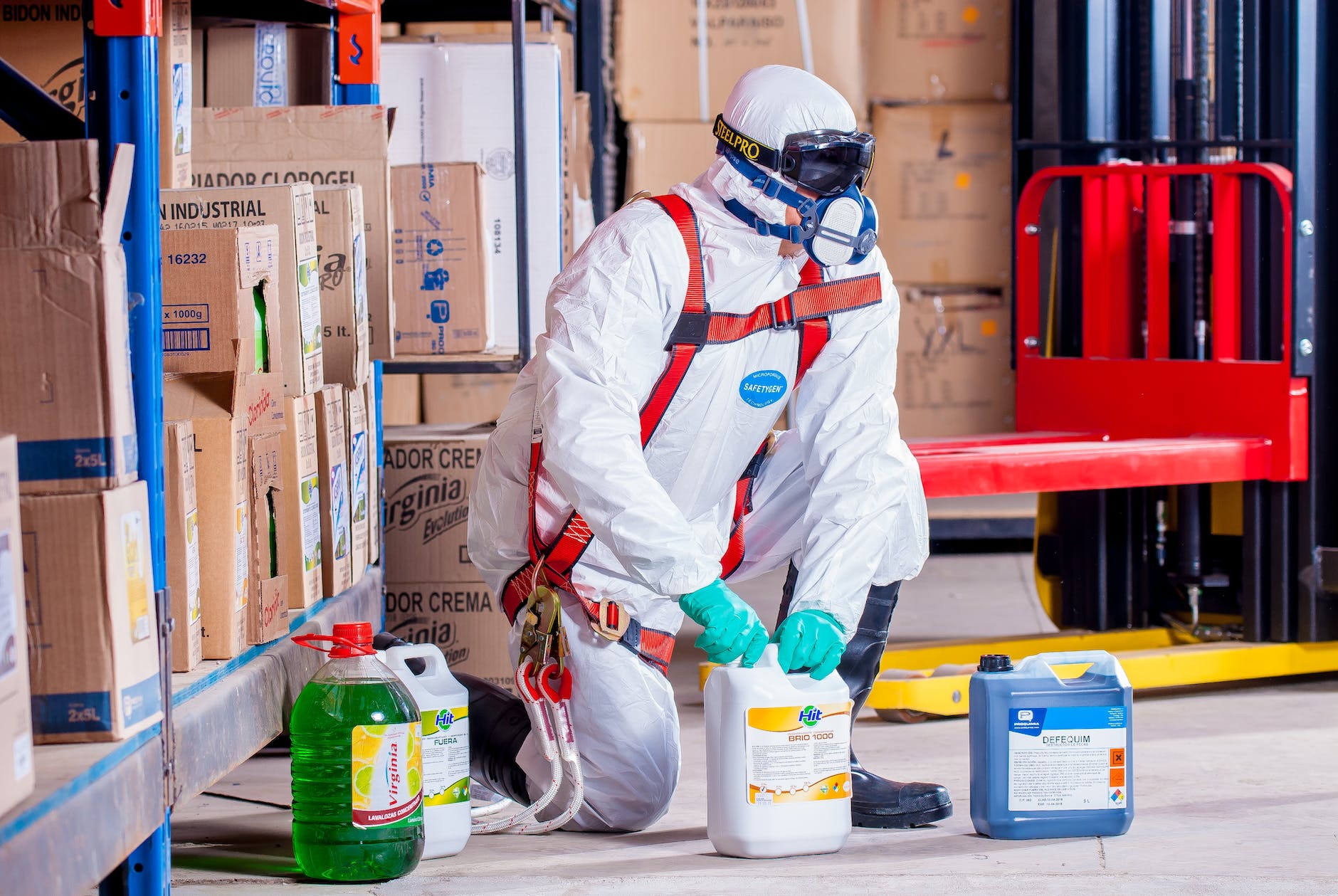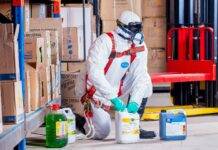
Chemical Handling: Storage and Personal Protective Equipment (PPE)
Introduction
Chemical handling in various industries demands careful consideration of safety measures to protect workers and prevent environmental incidents. This article explores two crucial aspects of chemical safety: proper storage practices and the use of Personal Protective Equipment (PPE) to mitigate the risks associated with handling hazardous substances.
Chemical Storage Best Practices
- Segregation of Incompatible Chemicals
- Categorizing and segregating chemicals based on compatibility
- Preventing potential reactions and hazards by storing incompatible chemicals separately
- Proper Labeling and Signage
- Ensuring accurate labeling of chemical containers
- Implementing clear signage indicating the nature of stored chemicals and any associated hazards
- Ventilation Systems in Storage Areas
- Installing effective ventilation systems in chemical storage areas
- Minimizing exposure to potentially harmful fumes and ensuring a well-ventilated environment
- Temperature Control
- Implementing temperature control measures for chemical storage
- Avoiding extreme temperatures that could compromise the stability and safety of stored substances
- Secondary Containment
- Providing secondary containment systems for chemical storage units
- Preventing leaks or spills from reaching the environment and facilitating easy cleanup
- Regular Inspections and Audits
- Conducting regular inspections of chemical storage areas
- Performing audits to ensure compliance with safety protocols and identify potential issues
- Emergency Response Preparedness
- Developing and practicing emergency response plans for chemical spills or leaks
- Equipping personnel with the knowledge and tools to respond swiftly to potential incidents
Personal Protective Equipment (PPE) for Chemical Handling
- Chemical-Resistant Gloves
- Providing chemical-resistant gloves appropriate for the specific chemicals handled
- Ensuring proper glove selection based on the nature of the substances to prevent skin contact
- Protective Eyewear and Face Shields
- Mandating the use of protective eyewear or face shields
- Safeguarding the eyes and face from splashes, spills, or airborne chemical particles
- Chemical-Resistant Clothing
- Supplying chemical-resistant clothing such as coveralls or aprons
- Creating a barrier between the skin and potential chemical exposure
- Respirators for Airborne Substances
- Implementing respiratory protection for airborne chemical substances
- Ensuring that workers use appropriate respirators to prevent inhalation of hazardous fumes or vapors
- Safety Footwear
- Requiring safety footwear in chemical handling areas
- Protecting feet from spills and providing additional support in case of accidental exposure
- Full-Face Respirators for Specific Hazards
- Providing full-face respirators for situations with heightened respiratory risks
- Ensuring comprehensive protection when dealing with highly toxic or airborne chemicals
- Training on PPE Usage
- Conducting thorough training on the correct usage of PPE
- Ensuring that employees are knowledgeable about the specific requirements for handling different chemicals and using the appropriate protective gear
Conclusion
In conclusion, prioritizing safety in chemical handling involves a combination of proper storage practices and the effective use of Personal Protective Equipment (PPE). By implementing best practices such as segregation, labeling, and ventilation in chemical storage, organizations create a secure environment. Simultaneously, providing and ensuring the correct use of chemical-resistant gloves, eyewear, clothing, respirators, and other PPE contributes to the well-being of workers handling hazardous substances. A comprehensive approach to chemical safety not only protects individuals but also minimizes the potential impact on the environment and surrounding communities.
Safety Data Sheets for Chemicals
What Is the Purpose of a Safety Data Sheet?
Frequently Asked Questions (FAQs)
- Why is segregation of incompatible chemicals important in storage?
- Segregation prevents potential reactions between incompatible chemicals, reducing the risk of hazards and ensuring the safety of personnel and the surrounding environment.
- What is the significance of secondary containment in chemical storage?
- Secondary containment provides an additional layer of protection by containing leaks or spills within designated areas. This minimizes the risk of hazardous substances reaching the environment and facilitates easier cleanup.
- Why is the use of chemical-resistant gloves crucial in chemical handling?
- Chemical-resistant gloves create a protective barrier between the skin and hazardous substances, preventing direct contact and minimizing the risk of chemical exposure.
- How does PPE training contribute to chemical safety?
- Thorough training on the correct usage of PPE ensures that employees are knowledgeable about the specific requirements for handling different chemicals. This knowledge enhances the effectiveness of protective gear and contributes to overall chemical safety in the workplace.
- What is the role of emergency response preparedness in chemical storage?
- Emergency response preparedness involves having plans and procedures in place to address chemical spills or leaks promptly. This preparedness ensures that personnel can respond swiftly to potential incidents, minimizing the impact on both human safety and the environment.
























